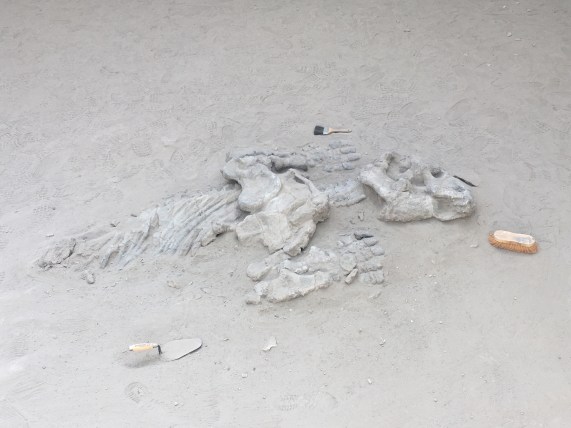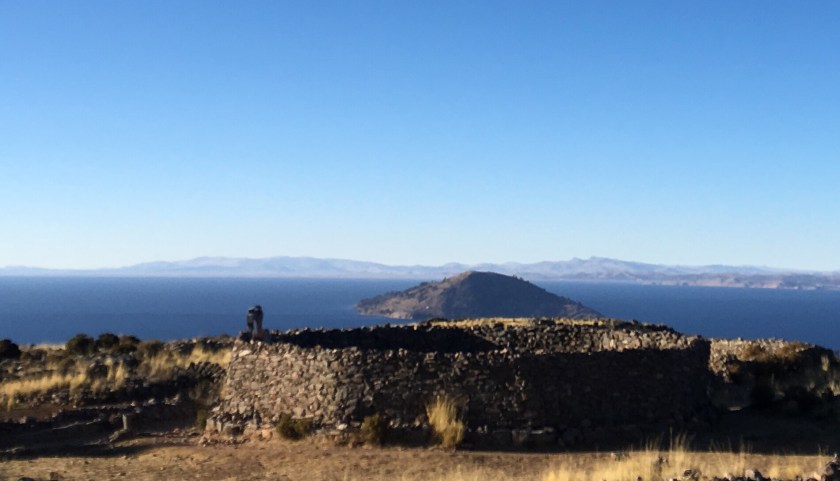I woke up early that morning in “Baldecitos”*, not really sure where I would be sleeping that night.
The French couple I had met, Silvia and Michel, were going to pick me up at 8am to tour the famous Parque Ischigualasto together, so I was pretty excited about that! (I would get a chance to get to know them, and I had overcome the challenge of seeing the park without my own car!)
But after that, my future was uncertain. I was learning to get comfortable with taking things day by day. Sometimes even hour by hour.
(In my travels, I keep a spreadsheet of dates and locations, transportation times and costs, etc., but it is more like a rough guide than a fixed plan. And the last few days I had really be improvising, especially as I’d discovered cute small towns and these national parks! Squirrel!)
A few minutes before 8am, I headed outside and found a car parked out front where we’d agreed to meet. As I approached, I was greeted by the bright smiling faces of Silvia and Michel, and I was happy to join the excited energy of heading off for a new adventure.
When we arrived at the park we were instructed that we would be joining a caravan of about 5 other vehicles, with the guide at the helm, and we would be stopping at certain spots along the way where we would get out, walk a short way, and the guide would share information with us.

At the first stop, we parked behind a white van with Texas plates. I rubbed my eyes and looked again, but it was true that I wasn’t dreaming.
After checking out the landscapes of the “valle de la luna”, I heard a couple my age speaking in English and heading towards the van. Too shy to talk to them, I never learned if they were really from Texas.
Just kidding. If you believed that, you haven’t been reading my blogs enough to know that I’m rarely too shy to talk to someone.
So, it was there in the middle of Argentina, where I met Danika and Brady, a couple that had been living in El Paso, Texas and had been planning to travel through South America. A little over a year ago, their plans started coming together and they decided to do the journey by land from Texas to the southern tip of South America. They bought a van and turned the back part of it into a mini-apartment – equipped with a bed, shelves, cabinets, a stove, and even with walls decorated with photos – and then began their journey south. And now, we had been lucky enough to cross paths here in Parque Ischigualasto!


Parque Ischigualasto was quite a gem, with fossils from as far back as the Triassic Period – 250 MILLION years ago – when Pangea existed! (Remember Pangea? Back when the majority of the continents were united as one continent.)
So the parks (Ischigualasto and Talamapaya) are UNESCO World Heritage sites because they help tell the story of the evolution of land and life on Earth across time.
With so much time on its hands, the Earth had done some pretty creative things. Like creating these perfectly-shaped spherical rocks.

Precariously balanced towers of rock.

That sometimes do topple over.

I saw where the ancient Egyptians got their idea for the Sphynx. (The natural world had already created it!)

One stop included a museum where they told us about the dinosaurs and fossils that have been found in the area (many dinosaurs have been found in Argentina!) They explained how they carefully excavate fossils and determine their age (carbon dating), how they determine where they should dig to look for interesting things, and how they try to understand the geological processes that cause changes across the millennia.

The final stop was a showcase of the rock formations in their different stages of evolution, so you could essentially see the process that leads to the creation of the mushroom formations, as it happens over thousands of years.

Loving my time with Michel and Silvia and having also made two new friends, Danika and Brady, I realized that as a group of 5, we could do the tour of “cañon arco iris” and “ciudad perdida” (Rainbow Canyon and Lost City). (This is the tour that leaves from the southern entrance of Parque Talampaya and leaves only if a group forms.) They were all interested in the idea, so instead of trying to head to San Juan, I continued on with them, back towards Parque Talamapaya.
On the way, Silvia, Michel, and I shared travel stories and talked about everything under the sun. I learned that Michel had actually been to Talampaya before, more than a decade ago, before it was a national park. At that time, he had been able to drive his vehicle through the park to see the sights. Now only the tour companies are permitted to drive in the park, to minimize the human impact.
Michel had a project collecting photos of all the different animal crossing signs they saw along the way, so I took advantage and joined in the game – which also included trying to spot all the animals from the signs.

We arrived at the ArcoIris entrance to Talampaya just in time to be able to do an afternoon tour, and we even picked up an extra for the group – Alicia, a woman from Mar de Plata (a city in Argentina) that was on vacation traveling by motorcycle. (We also greeted a French cyclist passing through, brave or crazy enough to be cycling through the desert.)

The hike through Cañon Arco Iris and Ciudad Perdida was time travel through millions of years. We started with the red “youngest” rock formations and as we walked along we passed through tens of millions of years, finally arriving at the grey oldest rock formations, named “Ciudad Perdida” because of their shapes.



Along the way, we could see how the seismic activity that created the Andes had lifted parts of earth’s crust out of the ground, exposing different layers of rock.

And we could see how the sun, wind, and rain changes the rock over millions of years, turning it into sand and reshaping it.

We also saw where the Incas might have gotten their idea for using rectangular stones for building walls that could withstand seismic activity…right there from nature herself.

You know when you meet someone that is so passionate about something that even if you never were interested in the topic before, they transmit their energy and enthusiasm to you and ignite an interest in you? (I’ve had some really good teachers with this talent, for example.) Well, our guide was like that. He was an easy-going and soft-spoken person, and when he talked about the the rocks and plants in the park and the history and science around it all, you could tell that he was really passionate about sharing this beautiful place with others (in his easy-going, soft-spoken kind-of-way).

Our guide Camilo lives in Pagancillo and the company that offers this tour is actually a co-op of independent guides, separate from the larger company at the main entrance of the park.
We finished the tour in the evening, and luckily, Silvia and Michel also loved staying in small towns, so I was happy to have already scouted out Pagancillo, the small town near the park. And I was really happy to be returning there to be able to see the friends I had made there, Dario and Marisel, once again.
That night, sharing wine and grapes (from their grape vine) with the family, the stars were shining brightly and it was a perfect opportunity to bust out the stargazing app and look at the stars. They were fascinated, as they hadn’t had the constellations pointed out to them before. So even though I was exhausted from a long day (that started in Baldecitos and had the surprise ending of being back here in Pagancillo), we walked down to the river where there were no lights to see the night sky in all its glory.**
Famous Footnotes:
*Baldecitos is the small town of about 10 houses, that is about 15km from the entrance to Parque Ischigualasto.
**While I was impressed by the centaur, whose hind leg is made up of the southern cross (only visible in the southern hemisphere), they were more impressed by the dog Sirius and Virgo.































































































